
Professor and Program Director Kim Nixon-Cave demonstrates hands-on skills to DPT hybrid students during their immersion session in Pittsburgh.
What is a Physical Therapist?
Are you looking to have a profound effect on people’s lives through improving their mobility and function? Physical therapists work one-on-one with patients and clients of all ages, populations, illnesses, injuries and movement dysfunction, and even dive into evidence-based research to expand the limits of what is known.
The American Physical Therapy Association describes a licensed doctor of physical therapy as one who optimizes a patient’s quality of life by maintaining, restoring and improving their ability to move, function and live a more active lifestyle. Physical therapists work in various settings including offices, hospitals, homes and nursing facilities; there are even options for traveling and virtual physical therapy.
A career in physical therapy is the perfect health care option for those who want to help people thrive, but who are looking for alternatives beyond a medical degree.
Who is a Physical Therapy Career For?
The profession is becoming more diverse as students from underrepresented populations and areas are drawn to the career. This growth helps improve access to health services in underserved communities. Physical therapy is often a second career for people with families or veterans who enjoy the job’s flexibility and are ready to build on their existing experiences.
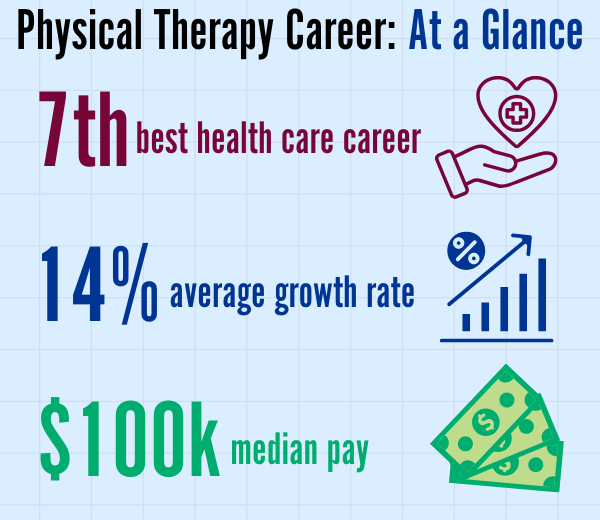
Sources: U.S. News and World Reports, U.S. Bureau of Labor Statistics
What Degree Do I Need To Become a Physical Therapist?
The Doctor of Physical Therapy (DPT) degree is required to practice as a physical therapist. It ensures you have received and are proficient in the courses, hands-on skills and clinical experiences that are needed to pass the National Physical Therapy Examination and to treat patients.
The University of Pittsburgh’s highly ranked Doctor of Physical Therapy (DPT) program—offered in both on-campus and hybrid formats over seven terms—may be a perfect fit for you.
Are you ready to get started in a physical therapy career? Follow these six steps make it happen!
Step 1: Earn a bachelor's degree!
The first step for all applicants is earning a bachelor’s degree. You can focus your undergraduate work in any area. It simply needs to be completed (with final transcripts) by the summer before the program starts.
You can use this rubric to identify the prerequisites that must be successfully completed to be considered eligible for entry into the University of Pittsburgh Doctor of Physical Therapy program. The rubric can also help identify suggested courses that meet the requirements of a specific prerequisite. (To note, we accept prerequisite coursework completed from any accredited institution. You can complete this coursework online or in-person.)
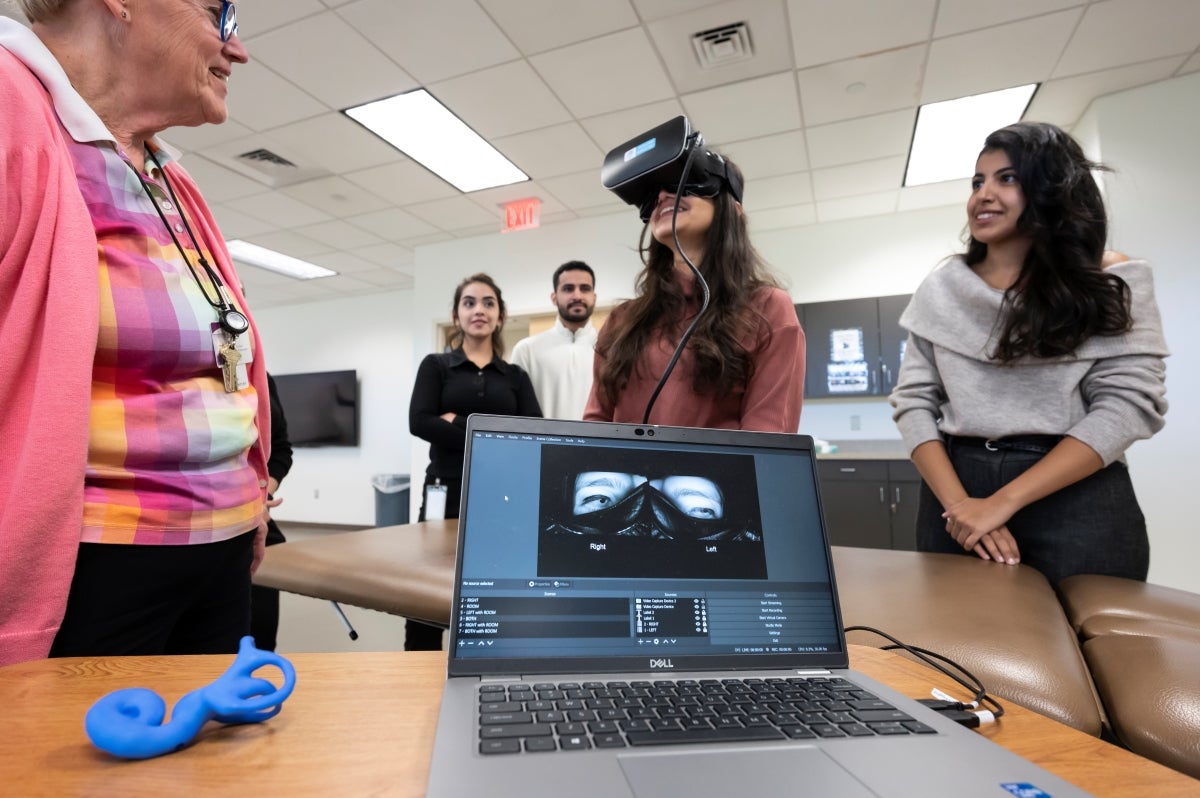
Professor Sue Whitney leads a physical therapy lab specializing in balance and dizziness in persons with vestibular disorders.
Step 2: Observe, observe, observe!
While earning your bachelor’s degree, make the time to become familiar with the profession by volunteering or working alongside established physical therapists. We require that all prospective students, upon application submission, have at least 40 hours of experience in the physical therapy field. It is preferable for applicants to show they are willing to work with a variety of patients in different physical therapy settings. We prefer to see that they have completed 40 hours in at least two different clinical settings.
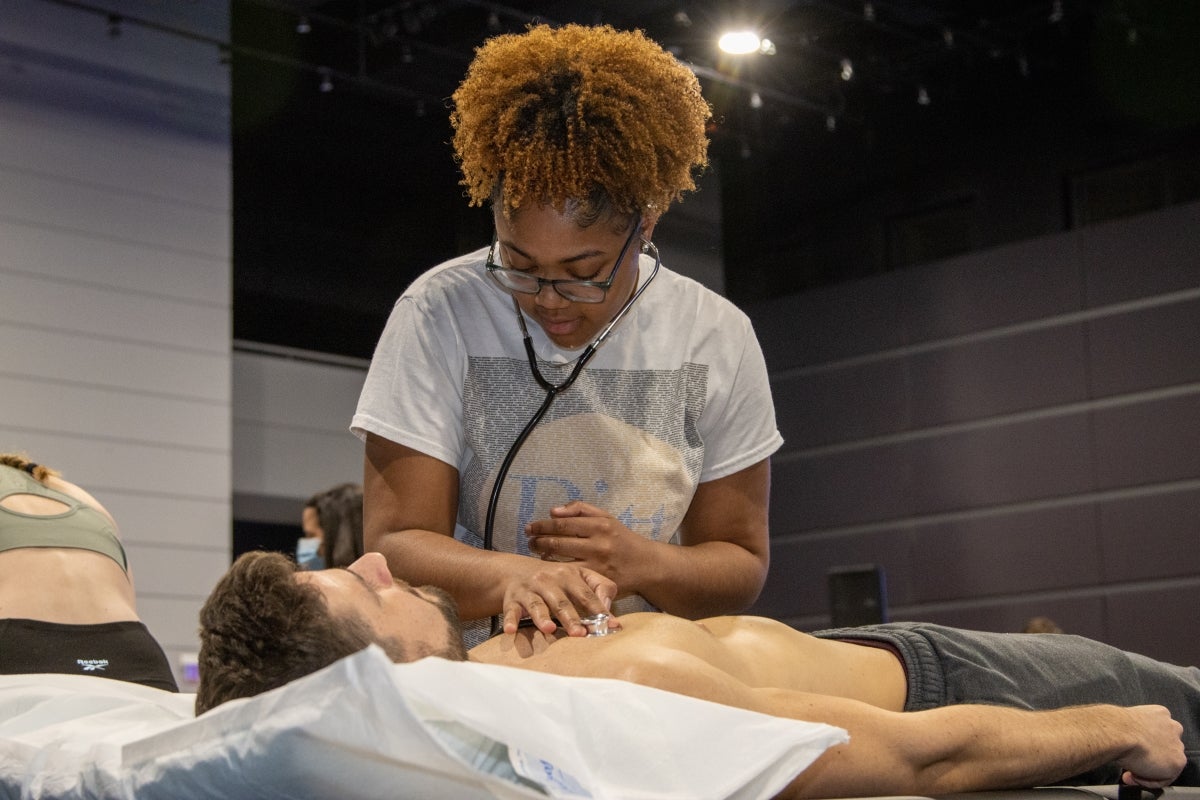
DPT hybrid students practice and refine their hands-on physical therapy skills during in-person immersion sessions each semester.
Step 3: Apply to Pitt’s Doctor of Physical Therapy program through PTCAS!
Start early and work through all sections of the APTA’s Physical Therapist Centralized Application Service— known as PTCAS—application. You need to put time and effort into your personal statement, University of Pittsburgh-specific essay question, three letters of recommendation and uploading your transcripts from ALL of colleges/universities that you have attended. We look at five primary areas when reviewing applications, all which are weighed equally during our scoring:
- Academics
- Essays
- Letters of recommendation
- Observation hours
- Extracurriculars/employment/volunteerism
We review applications holistically, so be sure to put effort into each part of the application!
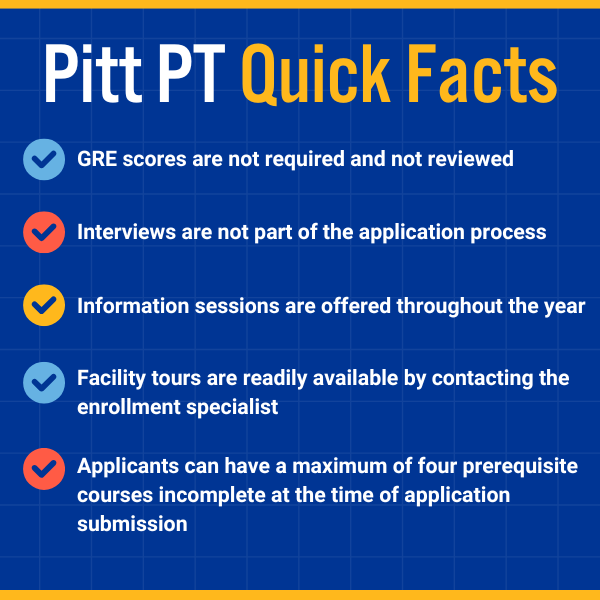
Step 4: Earn your Doctor of Physical Therapy degree!
Work your way through the Doctor of Physical Therapy curriculum in seven consecutive semesters, either at the University of Pittsburgh campus or your hometown (including the required in-person hybrid immersion experiences). DPT students take part in 42 weeks of clinical education—a full three months above the CAPTE requirement. This extra training helps you be ready to practice at the top of your license right after graduation.
Step 5: Pass the National Physical Therapy Exam!
After you receive your Doctor of Physical Therapy degree, you need to pass the licensure exam to become a practicing physical therapist. Once you receive your passing scores, you can apply for your license in the state where you’d like to practice. Each state varies in requirements.
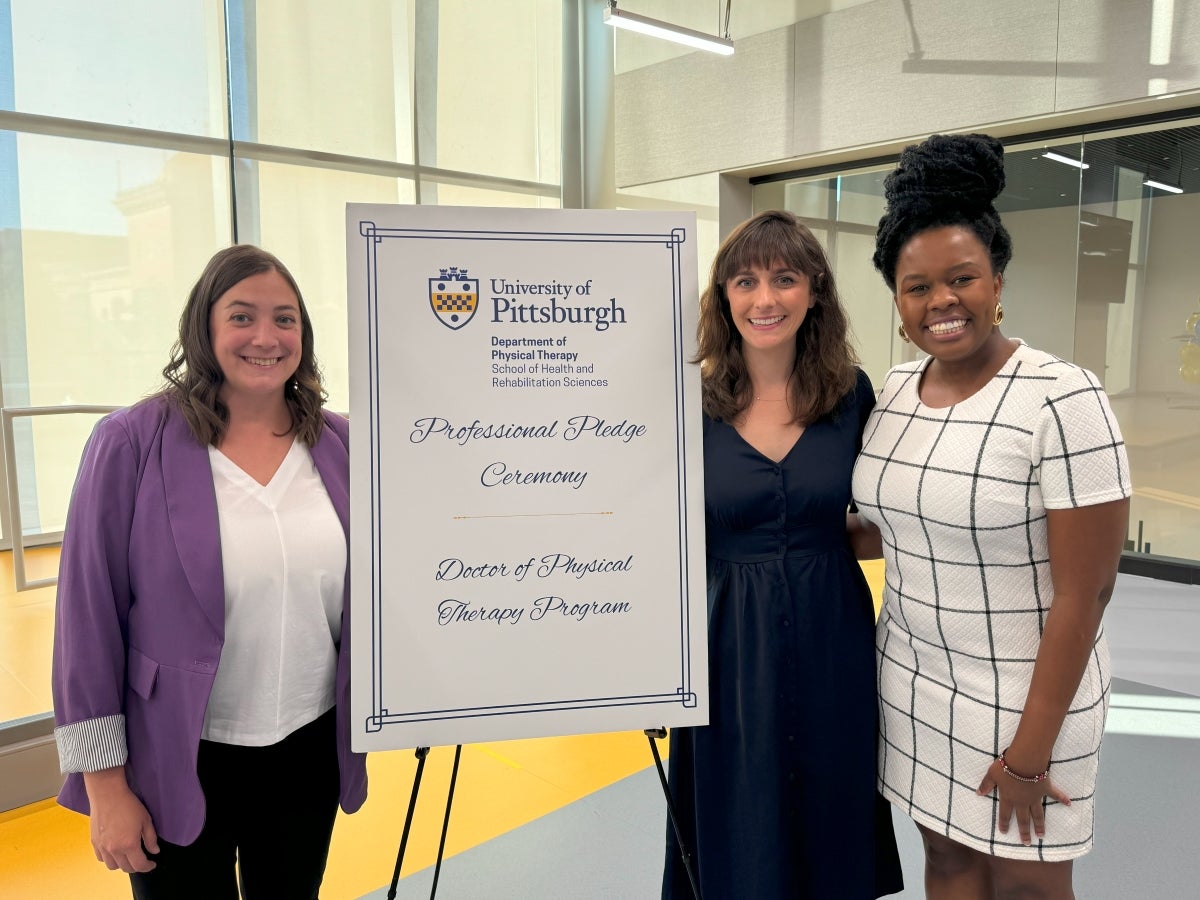
University of Pittsburgh Physical Therapy Assistant Professor Allyn Bove (PhD '20), alumna Molly Bachmann (DPT '18) and Pharmacy Assistant Professor Martha Ndung'u (PharmD '19) welcome you to the world of possibilities in the physical therapy profession!
Step 6: Get out into the field and join the Pitt PT alumni family!
Congratulations on all your hard work! Now it’s time to employ those skills. Our Doctor of Physical Therapy students have shown a 100% employment rate within six months of graduation. Many Pitt DPT students find employment through clinical education experiences, job postings on the networking site Pitt Commons and our extensive alumni connections.
Most importantly, we want you to know that after graduation, you will continue to be part of the Pitt PT family—a legacy nearly 100 years old!
Our alumni are active participants in their community, improving lives and continually advancing their knowledge. Whether through the University of Pittsburgh’s Continuing Education series or the annual American Physical Therapy Association conference, we celebrate your journey. We are proud of every step you have taken to reach your goal of becoming a physical therapist and cannot wait to hear of your success.
----------------
Do you have more questions about a career in physical therapy or applying to the program? Email ptinfo@shrs.pitt.edu to connect with an enrollment specialist today!
